#online marketplace development company
Explore tagged Tumblr posts
Text
Drive Digital Transformation with Online Marketplace Development Services
Tech Prastish can help you unlock the potential of your business. We are an online marketplace development company that can help you create a multi-vendor marketplace website or app that connects buyers and sellers globally with multiple vendors. Whether you're starting from scratch or looking to improve your current marketplace to take your online business to the next level, we can help.
0 notes
Text
Ecommerce Agency
Spread the proper information about your company and achieve success with the help of top-rated ecommerce agency, E:Command! If your company has all the necessary resources and produces the best items in the entire region, but you are still unable to achieve your goals, you may want a strong online presence to promote your brand. By giving consumers a simpler entry point into your organisation, a good online presence can attract more and better clients.
1 note
·
View note
Text
Boost Your Sales: Become a Seller on Amazon and Flipkart with Expert Marketing Services
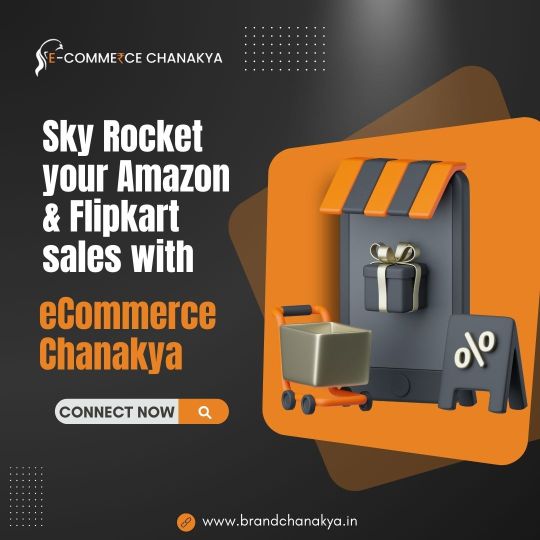
Unlock unparalleled growth by becoming a seller on Amazon and Flipkart today! With billions of customers waiting to discover your products, now is the perfect time to expand your reach. Our specialized Amazon and Flipkart marketing services are designed to skyrocket your sales, enhance product visibility, and optimize performance. Benefit from targeted advertising, brand positioning, and data-driven insights to stay ahead of the competition. Don’t miss out on the opportunity to transform your business—partner with us and watch your sales soar. Join the eCommerce revolution and start selling on Amazon and Flipkart with our expert guidance!
Visit our website to know more -https://ecommercechanakya.com/
#ecommerce#content marketing#best digital marketing company#socialmediamarketing#digital agency#smm services#search engine marketing#marketing strategy#startup#search engine optimization#online marketing#amazon marketing#flipkart marketing#ecommerce marketing experts#e commerce#marketplace marketing#ecommerce website development#ecommerce solutions#ecommerce development services#business growth#marketing#sales#onlinebusiness#ecommerce listing#amazon sales#flipkart sale
2 notes
·
View notes
Text
#e business, #shopping cart, #ecom, #online business, #online store #digital marketplace, #retail, #B2B, #B2C, #C2C, #B2B B2C C2C #app online

#smallbusiness#e business development#shopping cart#ecom#online business#online store#digital marketplace#retail#B2B#B2C#C2C#B2B B2C C2C#app online#digital marketplace web & app development company#retail e-commerce web & app#B2B e commerce web & app development company#B2C e commerce web & app development company#Retail C2C e commerce web & app development#retail B2B B2C C2C e commerce web & app development#ecommerce app online trading#e commerce web & app development company#e commerce web & app development#E commerce trading app development company#Hire E-commerce trading web & app developers#E commerce trading web & app solutions#E-commerce trading app development solutions provider#E commerce trading development#E commerce trading app services#E commerce trading development solution provider
2 notes
·
View notes
Text
Expand your business with eCommerce Marketplace
Choose Tecnolynx as your all-in-one eCommerce solution provider for both B2B and B2C businesses. We recognize that the need for online solutions is increasing rapidly due to shifts in the global market. In today’s landscape, merely having a physical store isn't enough. Allow us to offer you tailored solutions that will enable you to sell online and effectively convert more leads.
#E-commerce marketplace development#Marketplace platform#Online store development#E-commerce solutions#E-commerce website#Marketplace app development#Digital marketplace#E-commerce platform#Online marketplace#Marketplace development company
0 notes
Text

The cost to develop an online marketplace website like Airbnb can vary depending on factors such as features, Complexity and Development Company chosen. For instance, according to Dev Technosys, the cost could range between $8000 and $25000. However, this estimate may change based on specific requirements, customization needs, and additional features desired. It's essential to thoroughly discuss project details with development teams to get an accurate quote. Overall, investing in a quality marketplace website can yield significant returns in terms of user engagement and business growth.
#Develop an Online Marketplace Website#Marketplace Development Company#Cost to Develop an Online Marketplace Website#Marketplace Website and Application Variants
0 notes
Link
Expanding Horizons: New Marketplaces and Distribution Channels for E-Commerce Success
The world of ecommerce continues to evolve, presenting businesses with exciting opportunities to expand their reach and tap into new customer segments. With the emergence of new marketplaces and distribution channels, entrepreneurs and retailers have the chance to explore untapped markets, enhance brand visibility, and drive revenue growth. This article explores the significance of embracing new marketplaces and distribution channels for ecommerce success, highlighting key strategies to leverage these platforms effectively.
#ecommerce#ecommerce operations#ecommerce distribution#web developers#web developing company#web development#distribution channels#marketplaces#ecommerce marketplaces#tech#tech news#tech trends#b2c#b2b#online shopping#website#technology#technology news#technology trends
0 notes
Text
The Metaverse: A New Frontier in Digital Interaction

The concept of the metaverse has captivated the imagination of technologists, futurists, and businesses alike. Envisioned as a collective virtual shared space, the metaverse merges physical and digital realities, offering immersive experiences and unprecedented opportunities for interaction, commerce, and creativity. This article delves into the metaverse, its potential impact on various sectors, the technologies driving its development, and notable projects shaping this emerging landscape.
What is the Metaverse?
The metaverse is a digital universe that encompasses virtual and augmented reality, providing a persistent, shared, and interactive online environment. In the metaverse, users can create avatars, interact with others, attend virtual events, own virtual property, and engage in economic activities. Unlike traditional online experiences, the metaverse aims to replicate and enhance the real world, offering seamless integration of the physical and digital realms.
Key Components of the Metaverse
Virtual Worlds: Virtual worlds are digital environments where users can explore, interact, and create. Platforms like Decentraland, Sandbox, and VRChat offer expansive virtual spaces where users can build, socialize, and participate in various activities.
Augmented Reality (AR): AR overlays digital information onto the real world, enhancing user experiences through devices like smartphones and AR glasses. Examples include Pokémon GO and AR navigation apps that blend digital content with physical surroundings.
Virtual Reality (VR): VR provides immersive experiences through headsets that transport users to fully digital environments. Companies like Oculus, HTC Vive, and Sony PlayStation VR are leading the way in developing advanced VR hardware and software.
Blockchain Technology: Blockchain plays a crucial role in the metaverse by enabling decentralized ownership, digital scarcity, and secure transactions. NFTs (Non-Fungible Tokens) and cryptocurrencies are integral to the metaverse economy, allowing users to buy, sell, and trade virtual assets.
Digital Economy: The metaverse features a robust digital economy where users can earn, spend, and invest in virtual goods and services. Virtual real estate, digital art, and in-game items are examples of assets that hold real-world value within the metaverse.
Potential Impact of the Metaverse
Social Interaction: The metaverse offers new ways for people to connect and interact, transcending geographical boundaries. Virtual events, social spaces, and collaborative environments provide opportunities for meaningful engagement and community building.
Entertainment and Gaming: The entertainment and gaming industries are poised to benefit significantly from the metaverse. Immersive games, virtual concerts, and interactive storytelling experiences offer new dimensions of engagement and creativity.
Education and Training: The metaverse has the potential to revolutionize education and training by providing immersive, interactive learning environments. Virtual classrooms, simulations, and collaborative projects can enhance educational outcomes and accessibility.
Commerce and Retail: Virtual shopping experiences and digital marketplaces enable businesses to reach global audiences in innovative ways. Brands can create virtual storefronts, offer unique digital products, and engage customers through immersive experiences.
Work and Collaboration: The metaverse can transform the future of work by providing virtual offices, meeting spaces, and collaborative tools. Remote work and global collaboration become more seamless and engaging in a fully digital environment.
Technologies Driving the Metaverse
5G Connectivity: High-speed, low-latency 5G networks are essential for delivering seamless and responsive metaverse experiences. Enhanced connectivity enables real-time interactions and high-quality streaming of immersive content.
Advanced Graphics and Computing: Powerful graphics processing units (GPUs) and cloud computing resources are crucial for rendering detailed virtual environments and supporting large-scale metaverse platforms.
Artificial Intelligence (AI): AI enhances the metaverse by enabling realistic avatars, intelligent virtual assistants, and dynamic content generation. AI-driven algorithms can personalize experiences and optimize virtual interactions.
Wearable Technology: Wearable devices, such as VR headsets, AR glasses, and haptic feedback suits, provide users with immersive and interactive experiences. Advancements in wearable technology are critical for enhancing the metaverse experience.
Notable Metaverse Projects
Decentraland: Decentraland is a decentralized virtual world where users can buy, sell, and develop virtual real estate as NFTs. The platform offers a wide range of experiences, from gaming and socializing to virtual commerce and education.
Sandbox: Sandbox is a virtual world that allows users to create, own, and monetize their gaming experiences using blockchain technology. The platform's user-generated content and virtual real estate model have attracted a vibrant community of creators and players.
Facebook's Meta: Facebook's rebranding to Meta underscores its commitment to building the metaverse. Meta aims to create interconnected virtual spaces for social interaction, work, and entertainment, leveraging its existing social media infrastructure.
Roblox: Roblox is an online platform that enables users to create and play games developed by other users. With its extensive user-generated content and virtual economy, Roblox exemplifies the potential of the metaverse in gaming and social interaction.
Sexy Meme Coin (SEXXXY): Sexy Meme Coin integrates metaverse elements by offering a decentralized marketplace for buying, selling, and trading memes as NFTs. This unique approach combines humor, creativity, and digital ownership, adding a distinct flavor to the metaverse landscape. Learn more about Sexy Meme Coin at Sexy Meme Coin.
The Future of the Metaverse
The metaverse is still in its early stages, but its potential to reshape digital interaction is immense. As technology advances and more industries explore its possibilities, the metaverse is likely to become an integral part of our daily lives. Collaboration between technology providers, content creators, and businesses will drive the development of the metaverse, creating new opportunities for innovation and growth.
Conclusion
The metaverse represents a new frontier in digital interaction, offering immersive and interconnected experiences that bridge the physical and digital worlds. With its potential to transform social interaction, entertainment, education, commerce, and work, the metaverse is poised to revolutionize various aspects of our lives. Notable projects like Decentraland, Sandbox, Meta, Roblox, and Sexy Meme Coin are at the forefront of this transformation, showcasing the diverse possibilities within this emerging digital universe.
For those interested in the playful and innovative side of the metaverse, Sexy Meme Coin offers a unique and entertaining platform. Visit Sexy Meme Coin to explore this exciting project and join the community.
261 notes
·
View notes
Text
30 ways to make real; money from home
Making money online from the comfort of your home has become increasingly accessible with the growth of the internet and digital technologies. In 2023, there are numerous realistic ways to earn money online. Here are 30 ideas to get you started:
1. Freelance Writing: Offer your writing skills on platforms like Upwork or Freelancer to create blog posts, articles, or website content.
2. Content Creation: Start a YouTube channel, podcast, or blog to share your expertise or passion and monetize through ads, sponsorships, and affiliate marketing.
3. Online Surveys and Market Research: Participate in online surveys and market research studies with platforms like Swagbucks or Survey Junkie.
4. Remote Customer Service: Work as a remote customer service representative for companies like Amazon or Apple.
5. Online Tutoring: Teach subjects you're knowledgeable in on platforms like VIPKid or Chegg Tutors.
6. E-commerce: Start an online store using platforms like Shopify, Etsy, or eBay to sell products.
7. Affiliate Marketing: Promote products or services on your blog or social media and earn commissions for sales made through your referral links.
8. Online Courses: Create and sell online courses on platforms like Udemy or Teachable.
9. Remote Data Entry: Find remote data entry jobs on websites like Clickworker or Remote.co.
10. Virtual Assistance: Offer administrative support services to businesses as a virtual assistant.
11. Graphic Design: Use your graphic design skills to create logos, graphics, or websites for clients on platforms like Fiverr.
12. Stock Photography: Sell your photos on stock photography websites like Shutterstock or Adobe Stock.
13. App Development: Develop and sell mobile apps or offer app development services.
14. Social Media Management: Manage social media accounts for businesses looking to enhance their online presence.
15. Dropshipping: Start an e-commerce business without holding inventory by dropshipping products.
16. Online Consultations: Offer consulting services in your area of expertise through video calls.
17. Online Surplus Sales: Sell unused items or collectibles on platforms like eBay or Facebook Marketplace.
18. Online Fitness Coaching: Become an online fitness coach and offer workout plans and guidance.
19. Virtual Events: Host webinars, workshops, or conferences on topics you're knowledgeable about.
20. Podcast Production: Offer podcast editing, production, or consulting services.
21. Remote Transcription: Transcribe audio and video files for clients.
22. Online Translation: Offer translation services if you're proficient in multiple languages.
23. Affiliate Blogging: Create a niche blog with affiliate marketing as the primary revenue source.
24. Online Art Sales: Sell your artwork, crafts, or digital art on platforms like Etsy or Redbubble.
25. Remote Bookkeeping: Offer bookkeeping services for small businesses from home.
26. Digital Marketing: Provide digital marketing services like SEO, PPC, or social media management.
27. Online Gaming: Stream your gaming sessions on platforms like Twitch and monetize through ads and donations.
28. Virtual Assistant Coaching: If you have experience as a VA, offer coaching services to aspiring virtual assistants.
29. Online Research: Conduct research for businesses or individuals in need of specific information.
30. Online Real Estate: Invest in virtual real estate, such as domain names or digital properties, and sell them for a profit.
Remember that success in making money online often requires dedication, patience, and the ability to adapt to changing trends. It's essential to research and choose the opportunities that align with your skills, interests, and long-term goals.
#founder#accounting#ecommerce#copywriting#business#commercial#economy#branding#entrepreneur#finance#make money online#earn money online#make money from home#old money#i turn to these cute#disgraced youtuber ruby franke#my mum#money#claims shock report#says terrified brit#easy money
72 notes
·
View notes
Text
One of the biggest hacks of the year may have started to unfold. Late on Friday, embattled events business Live Nation, which owns Ticketmaster, confirmed it suffered a data breach after criminal hackers claimed to be selling half a billion customer records online. Banking firm Santander also confirmed it had suffered a data breach impacting millions of customers and staff after its data was advertised by the same group of hackers.
While the specific circumstances of the breaches—including exactly what information was stolen and how it was accessed—remain unclear, the incidents may be linked to attacks against company accounts with cloud hosting provider Snowflake. The US-based cloud firm has thousands of customers, including Adobe, Canva, and Mastercard, which can store and analyze vast amounts of data in its systems.
Security experts say that as more details become clear about hackers' attempts to access and take data from Snowflake’s systems, it is possible that other companies will reveal they had data stolen. At present, though, the developing situation is messy and complicated.
“Snowflake recently observed and is investigating an increase in cyber threat activity targeting some of our customers’ accounts,” wrote Brad Jones, Snowflake’s chief information security officer in a blog post acknowledging the cybersecurity incident on Friday. Snowflake has found a “limited number” of customer accounts that have been targeted by hackers who obtained their login credentials to the company’s systems, Jones wrote. Snowflake also found one former staff member’s “demo” account that had been accessed.
However, Snowflake doesn’t “believe” it was the source of any leaked customer credentials, the post says. “We have no evidence suggesting this activity was caused by any vulnerability, misconfiguration, or breach of Snowflake’s product,” Jones wrote in the blog post.
While the number of Snowflake accounts accessed and what data may have been taken have not been released, government officials are warning about the impact of the attack. Australia’s Cyber Security Center issued a “high” alert on Saturday, saying it is “aware of successful compromises of several companies utilizing Snowflake environments” and companies using Snowflake should reset their account credentials, turn on multifactor authentication, and review user activity.
“It looks like Snowflake has had some rather egregiously bad security compromise,” security researcher Troy Hunt, who runs data breach notification website Have I Been Pwned, tells WIRED. “It being a provider to many other different parties, it has sort of bubbled up to different data breaches in different locations.”
Details of the data breaches started to emerge on May 27. A newly registered account on cybercrime forum Exploit posted an advertisement where they claimed to be selling 1.3 TB of Ticketmaster data, including more than 560 million people’s information. The hacker claimed to have names, addresses, email addresses, phone numbers, some credit card details, ticket sales, order details, and more. They asked for $500,000 for the database.
One day later, the established hacking group ShinyHunters—which first emerged in 2020 with a data-stealing rampage, before selling 70 million AT&T records in 2021—posted the exact same Ticketmaster ad on rival marketplace BreachForums. At the time, Ticketmaster and its parent company Live Nation had not confirmed any data theft and it was unclear if either post selling the data was legitimate.
On May 30, ShinyHunters also claimed to be selling 30 million customer details and staff information from Santander, putting a $2 million price tag on the information. Both posts on BreachForums have drawn attention to the illegal marketplace, which was recently revived by ShinyHunters after the FBI took the website down on May 15. The posts may, at least in part, be efforts to restore the disrupted forum’s damaged reputation with criminals.
The two hacks were linked to Snowflake’s systems by Israeli security firm Hudson Rock, which, in a now-removed blog post, posted conversations its researchers had with the alleged hacker who claimed to have accessed Snowflake’s systems and exfiltrated data. The hacker claimed they had tried to sell the data back to Snowflake for $20 million. (Hudson Rock did not respond to WIRED’s questions about why it has removed its research).
The Hudson Rock post claimed that a Snowflake employee may have been infected by an infostealer that collected the details the hacker needed to log in to its systems. Charles Carmakal, the chief technology officer at Google-owned security firm Mandiant, told BleepingComputer that its investigations, which have been taking place in recent weeks, indicate information-stealing malware may have been used to get Snowflake account credentials.
A Ticketmaster spokesperson told TechCrunch that its stolen database was hosted on Snowflake after the company acknowledged a data breach in a filing to the Securities and Exchange Commission on Friday evening. In the middle of May, before its data was advertised online, Santander first said it had seen unauthorized access to one of its databases “hosted by a third-party provider,” however it has refused to name the third party.
Snowflake’s CISO, Jones, acknowledged the security incident on Friday, saying that if a “threat actor obtains customer credentials, they may be able to access the account.” The company says it became aware of the suspicious activity on May 23 but has since found out it had been happening since mid-April. Jones’ post says Snowflake has notified all of its customers and “encouraged” them to review account settings and ensure they have implemented multi-factor authentication. In an additional security bulletin, Snowflake says it has seen “malicious traffic” from a client calling itself “rapeflake” and also connections from another client called “DBeaver_DBeaverUltimate.” A company spokesperson tells WIRED they have “nothing else to add” beyond the information included in company posts.
Cloud security company Mitiga says its investigations have seen a threat actor targeting organizations using Snowflake databases and using an attack tool called “rapeflake” in the process. Roei Sherman, field CTO at Mitiga, tells WIRED one possible scenario is that a threat actor managed to get information about Snowflake’s systems and then stole information about its clients, possibly using automated tools and brute-forcing their way into accounts.
Sherman says little is known about what data was stolen at the moment or the “rapeflake” tool, but that the attack could have wider ramifications going forward. There are already early signs other companies may be impacted.
Sherman says some of Mitiga’s customers have reached out to it for help, while Mandiant told BleepingComputer it had been assisting Snowflake customers in recent weeks. Cybersecurity researcher Kevin Beaumont shared online that he knows of six companies that have been impacted. And Australian events company Ticketek has also revealed customer names and email addresses stored in a “cloud-based platform, hosted by a reputable, global third-party supplier” have been accessed, although a spokesperson refused to confirm if this was related to Snowflake at all.
“We haven’t seen the entire blast radius yet,” Sherman says. “Snowflake has thousands of clients—they offer self-registration—and some of their clients are huge companies. We expect to learn about additional companies compromised.”
18 notes
·
View notes
Text
Boost Your Online Business with Marketplace Development Services
Are you searching for an ideal marketplace development partner? Look no further as Tech Prastish Software Solutions Pvt. Ltd. is here for you. With an experience spanning over more than a decade, Tech Prastish is an online marketplace development company specializing in comprehensive end-to-end marketplace creation and multi-vendor management services. Whether you're looking to develop an online marketplace from the ground up or upgrade your existing e-commerce platform, our developers offer the expertise and support needed to achieve your goals. Contact us now and get robust solutions for your new and existing marketplaces.
#Online Marketplace Development Services#Online Marketplace Development Company#Custom Marketplace Development Services#Online Services Marketplace
0 notes
Text
Ecommerce Development in London: Choose eCommand for a Successful Online Presence
In today’s digital age, it is imperative for businesses to have a strong online presence to stand out in their market. This is where eCommand comes in, offering dependable, reliable, and fast eCommerce development in London services to help businesses succeed online.
#eCommand: Your Premier Online Marketplace Development Company#Ecommerce Development in London: Choose eCommand for a Successful Online Presence
0 notes
Text
Another Internet Whitepaper
I'm just gonna get into there is no way to preface this.
1) content should be hosted in their own countries for which they are meant.
2) therefore the website should split into Nation->Sub-nation sections. So things for Michigan would be closer to those in Michigan. With U.S.->Michigan.
--"independent" Nations are just gonna have to deal with being lumped together into a united region. It's simply physics.
--country wide servers and clouds, and worldwide services will still be available; but we need to develop protocols to make it easier to distribute data and declutter the internet-cloud.
3) a separate Intranet for official use and security will need to be developed alongside this while also being completely disconnected from the worldwideweb.
4) Splits;
IP Addresses redesign;
[Country/Region]:[State/Province]:[individual]
[Individual] will need to be controlled by local The Internet Assigned Numbers Authority (IANA) branches; likely to be reassigned to DMVs and SoSs.
5) Separate protocols For;
Streaming Services
Social Media Services
Bidirectional Interactions (like games and Virtual Machines)
Pornography needs to be completely identifiable by textual Web address.
5) you local region will be defaulted, but can be changed by the browser and not be hard-wired in.
Not indicating a region will automatically default to the local internet.
So typing in FBI.GOV in the U.S. will lead to the FBI website, and if you type it in the UK it'll lead to Mi:5 or something.
6) Social Media protocols will have to be integrated with the E-Mail SMTP protocols. Which will encourage a more decentralized internet. This will *also* have to find a way to work with phone text messages.
7) Cable TV and Streaming services will have to use the same protocols.
8) Because there's phone integration here; a phone number may have to be closer to a social security number going forward. Which will both be bad for animosity, but allow for people to not need login information.
-- This will technically also need to apply to your House; which will have to have an assigned street address.
9) all of these need to be obfuscated to casual observers.
10) this will deprecate our phone companies and require them to work with cable TV and internet companies in order to create more equitable protocols.
11) the current IP address and Domain Registry systems need to be deprecated; as it does not suit its original purpose.
[.xxx] will be assigned for all "adult" materials and be required for ALL "adult materials" posted online.
[.app] will be assigned for appstores.
[.store] for marketplaces like Amazon, eBay, and whatever else.
[.bank] will be for banking and credit purposes
[.social] will be for social media
[.stream] will be for streaming materials,
[.np] for non-profit use only.
[.donation] for donation collections and Kickstarter like services.
[.pay] for payment services like PayPal
Non "adult materials" can be streamed through other "front ends" .
13) These human readable extensions will be simplified on the backend to reduce the total data envelope size.
14) single digit ip-adresses will have to be regulated for use for high-capacity uses. These will need to be "extended" protocols that different services can use.
This will help even out everybody's data envelopes. This will have to be part of a cloud service that can be used by anybody that needs it. With certain restrictions that are deemed necessary by local and federal governments and international treaty reasons.
15) limits on how algorithms and "bots" can ping anything at one time need to be addressed or regulated.
This will be a massive undertaking with the cooperation of all the other governments around the world.
And will be a very lucrative endeavor at the end of it all.
This is just an outline to describe the form the future internet should take and can be changed or modified as required; especially for things I cannot see.
The current corporations will be expected to develop a plan of actions in tandem with current regulatory authorities; failure to do so will create a need for an ultimatum, which we all wish to avoid.
We're also going to need to find ways to encourage competition in these sectors so that they can be upgraded and modified as needed by local areas instead of waiting on these companies to bother with it.
13 notes
·
View notes
Text
"Tom and Jerry" Fighting Game idea
Taking inspiration from "Looney Tunes: World of Mayhem", I've been wondering if "Tom and Jerry" should ever follow suit one day with its own fighting game on PC and mobile devices. This game would be a free app, with only stuff from the game's marketplace requiring you to pay money for stuff like Season Passes and other offers.
The game can also have multiplayer supported through online play.
I don't know too much of Tom and Jerry's lore per say, but other than Tom, Jerry, Spike, Butch, Tuffy, Quacker, and other characters we commonly see in various media, there's potential for seeing obscure characters (and character skins) returning for this app like characters from the direct-to-video movies and maybe additional characters from the two theatrical films.
Obviously Scopely and Warner Bros. Interactive Entertainment would publish it (with additional support from Warner Bros' sister company, MGM), and it could use the same development team who worked on "Looney Tunes: World of Mayhem", but this is all I've got for now.
#321SPONGEBOLT's Ideas#Tom and Jerry#fan concept#browser games#browser game concepts#flash games#flash game concepts#online games#online game concepts#app concept#app concepts#video game concept#idea blog
7 notes
·
View notes
Text
Business Model for Stellar Charm:
Target Market: The target market for Stellar Charm will be primarily young adults and teenagers who are interested in strategy-based card games. The game will also appeal to astronomy enthusiasts and fans of fantasy and mythology.
Revenue Streams: The primary source of revenue for Stellar Charm will be the sales of the game itself. In addition, the game can generate revenue through expansion packs, limited edition cards, and merchandise such as t-shirts, posters, and figurines.
Distribution Channels: Stellar Charm will be sold through various distribution channels such as online marketplaces like Amazon and Etsy, as well as through brick and mortar stores specializing in board games and card games. The game will also be available for purchase directly from the company's website.
Marketing and Advertising: To reach the target market, Stellar Charm will utilize a mix of digital and traditional marketing strategies. This will include social media marketing, influencer partnerships, targeted online ads, and participation in gaming conventions and events. The game will also have a strong presence on popular gaming forums and communities.
Production and Manufacturing: The game will be produced and manufactured in-house to maintain quality control and minimize production costs. This will also allow for faster turnaround time for new expansions and updates.
Pricing Strategy: The price of the base game will be set at a competitive rate to attract customers. Expansion packs and limited edition cards will be priced slightly higher to appeal to collectors and enthusiasts. Discounts and promotions will also be offered periodically to encourage sales.
Customer Support: Stellar Charm will have a dedicated customer support team to handle any queries or concerns from customers. This will ensure a positive customer experience and help build brand loyalty.
Partnerships and Collaborations: In order to increase brand awareness and reach a wider audience, Stellar Charm will collaborate with other popular games and brands. This can include cross-promotion, co-branded products, and special events.
Cost Structure: The main costs involved in running the business will include production and manufacturing costs, marketing and advertising expenses, and operational expenses such as rent, utilities, and salaries. The company will also invest in research and development to continuously improve the game and create new expansions.
Future Plans: As the game gains popularity, the company can consider developing a digital version of Stellar Charm for mobile or computer platforms. This can open up new revenue streams and reach a larger audience. The company may also consider licensing the game to other countries to expand its market reach. Play style
Card Name and Type: This feature displays the name of the battle card and its type, such as "Stellar Charm - Magical" or "Stellar Charm - Elemental". This helps the player identify the card and its category, which can be useful in planning their strategy.
Element: The element of the card is represented by a symbol or color and is crucial in determining its strengths and weaknesses. For example, a water element card may be strong against fire but weak against lightning. The player must keep this in mind when using the card in battles.
Attack Points: This feature displays the attack points of the card, which represents its offensive power. The higher the attack points, the stronger the card's attack will be. The player can use this information to strategically choose when to use the card in battle.
Defense Points: The defense points of the card represent its defensive capabilities. The higher the defense points, the better the card can withstand attacks from the opponent. The player can use this feature to strategically defend against the opponent's attacks.
Special Ability: Some battle cards may have a special ability that can be activated during battle. This feature will describe the special ability, such as "Healing Aura" or "Double Attack", and how it can be used in battle. The player must carefully consider when to use the special ability to gain an advantage over their opponent.
Fusion Requirements: The fusion requirements feature displays the elements or types of cards needed to fuse with the Stellar Charm card to create a more powerful card. This adds a layer of strategy to the game as the player must strategically choose which cards to fuse with the Stellar Charm card to create the most advantageous outcome.
Lore: The lore of the card provides a background story or description of the card, which can help the player understand the card's role in the game. This feature can also add an element of immersion and depth to the game, making it more engaging for the player. The game would be called "Constellation Clash" and it would be a two-player strategy battle card game. The objective of the game would be to collect and control the most constellations by the end of the game. Card Types:
Constellation Cards
These cards represent the 88 constellations and each one has its own unique abilities and strengths.
Zodiac Cards - These cards represent the 12 zodiac signs and can be used to enhance the abilities of constellation cards.
Star Cards - These cards represent individual stars and can be used to boost the power of constellation cards.
Element Cards - These cards represent the four elements (fire, water, air, and earth) and can be used to counter certain constellation cards.
Action Cards - These cards have various effects and can be used to interrupt or change the course of the game. Card Styles:
Basic Cards - These cards have a simple design and represent the less powerful constellations.
Advanced Cards - These cards have a more intricate design and represent the more powerful constellations.
Mythical Cards - These cards have a unique design and represent the rare and powerful constellations. Gameplay:
Set-Up - Each player starts with a deck of 20 constellation cards, 10 zodiac cards, 10 star cards, and 5 element cards. Each player also starts with 5 action cards in their hand. The remaining action cards are placed in a separate deck.
Turn Sequence - The game is played in turns. Each turn, a player can perform the following actions in any order:
Play one constellation card from their hand onto the field.
Play one zodiac or star card from their hand onto the field, and attach it to a constellation card already on the field.
Play one action card from their hand and resolve its effect.
Battle Phase - Once both players have finished their turns, a battle phase begins. The player who has the most stars attached to their constellation cards has the first attack. Each player takes turns attacking and defending until all battles have been resolved.
Battle Rules - During a battle, the attacking player chooses one of their constellation cards to attack with. The defending player can choose to block the attack with one of their constellation cards or take the full damage. If the attack is blocked, the defender's constellation card is discarded. If the attack is not blocked, the defender takes damage equal to the difference between the attacking constellation card's power and the defending constellation card's power.
Element Advantage - Certain constellation cards have an advantage over others based on their element. If a constellation card with a higher element attacks a constellation card with a lower element, the attacking card's power is increased by 50%.
Mythical Card Rule
If a player has a mythical card on the field, they can choose to activate its special ability once per turn during the battle phase.
End of Turn - After the battle phase, the player can choose to discard any cards from their hand and draw new ones, up to their hand limit of 5 cards.
End of Game - The game ends when one player has control of at least 10 constellations or when one player runs out of cards in their deck. The player with the most constellations under their control wins the game. The phases of the game would develop as players strategically play their cards, trying to gain control of the most powerful constellations and using their zodiac and star cards strategically to enhance their abilities. The game would also require players to carefully manage their resources and choose when to use their action cards for maximum impact. With the mythical cards adding an extra element of surprise, every game would be unique and challenging.
Zodiac Cards: These are the most powerful and rare cards in the game, representing the 12 zodiac signs. Each Zodiac Card has a unique ability and high attack and defense points.
Star Cards: These cards represent the stars within each constellation and are the backbone of any deck. They have a balanced mix of attack and defense points and can be used strategically to support other cards.
Mythology Cards: These cards are based on the ancient stories and myths associated with each constellation. They have powerful abilities that can turn the tide of battle, but are limited in number and should be used sparingly.
Elemental Cards: There are 4 elemental card types in the game - Fire, Water, Earth, and Air, each representing a different element from the universe. These cards have a rock-paper-scissors relationship with each other, with one element being strong against another and weak against the third. They can be used to counter opponent's cards and add an element of strategy to the game.
Celestial Cards: These cards represent celestial objects such as planets, comets, and galaxies. They have powerful abilities that can affect multiple cards at once, but are also limited in number and should be used strategically.
Constellation Cards: These cards represent the constellations themselves and have a unique ability that can only be activated when a player has a certain number of cards from the same constellation in their hand.
Support Cards: These cards do not have any attack or defense points, but instead, provide support to other cards in a player's hand. They can boost attack or defense points, provide additional abilities, or even revive defeated cards. Card Styles:
Standard Cards: These cards have a simple design with the constellation name and image on the front and the card type and stats on the back.
Foil Cards: These are rare and valuable versions of the standard cards, with a metallic sheen and enhanced artwork.
Holographic Cards: These cards have a holographic design that changes depending on the angle they are viewed from. They are highly sought after by collectors.
Legendary Cards: These are the most powerful and rare cards in the game, with unique artwork and abilities. They are highly coveted and can only be obtained through special events or by trading with other players.
Promo Cards: These limited edition cards are only available through special promotions, such as tournaments or special edition sets.
Prism Cards: These cards have a prism design that creates a rainbow effect when viewed under light. They are highly prized by players for their unique design.
Cosmic Cards: These cards have a cosmic design, with images of galaxies, stars, and other celestial objects. They are considered the most visually stunning cards in the game.
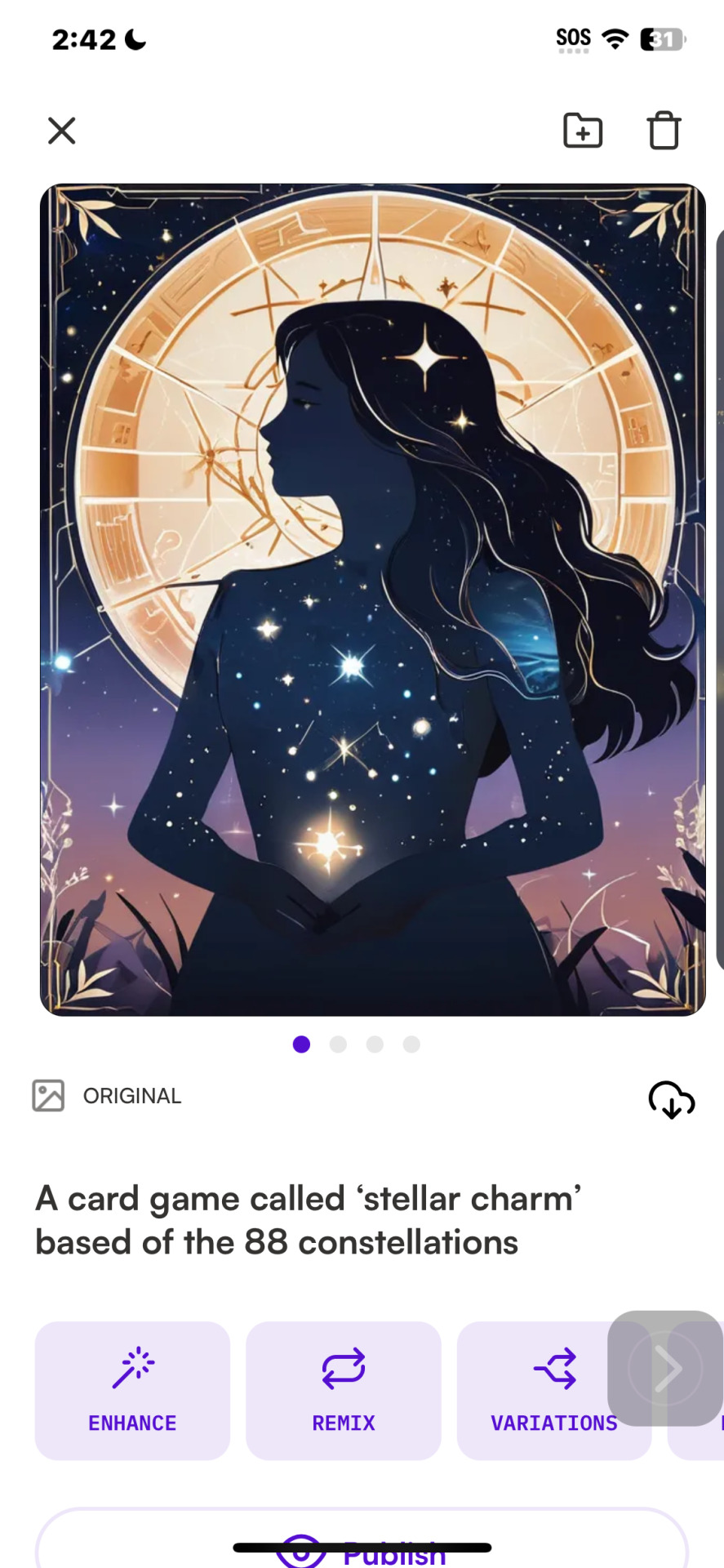


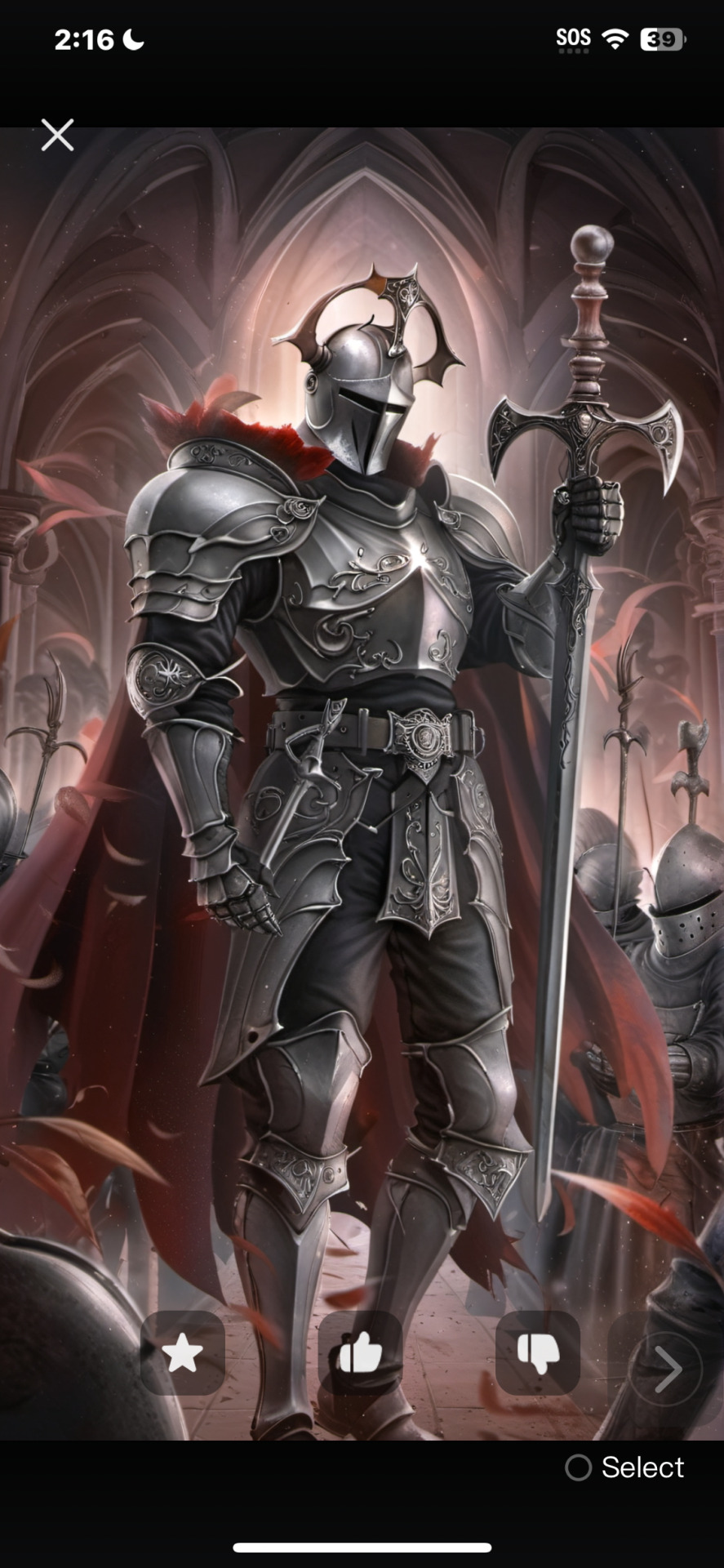















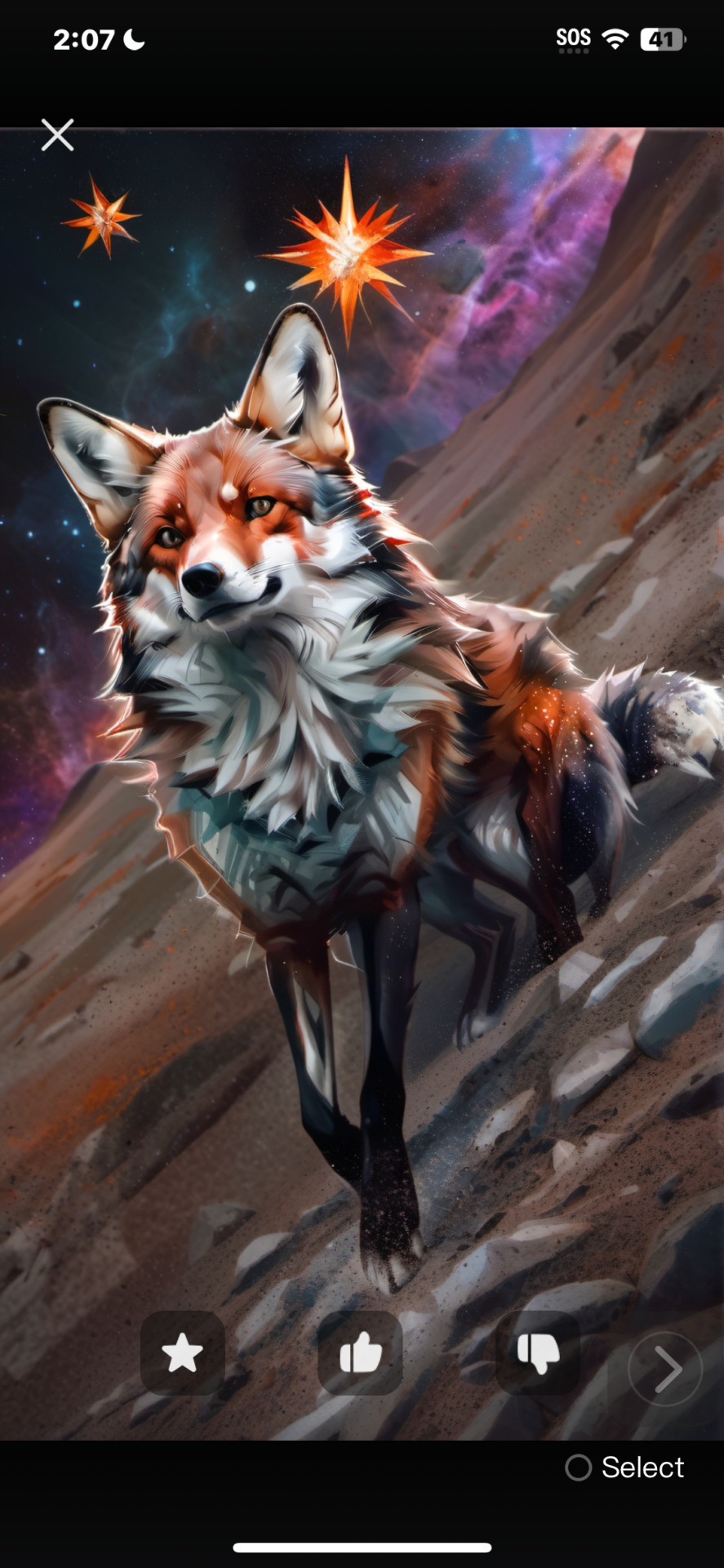







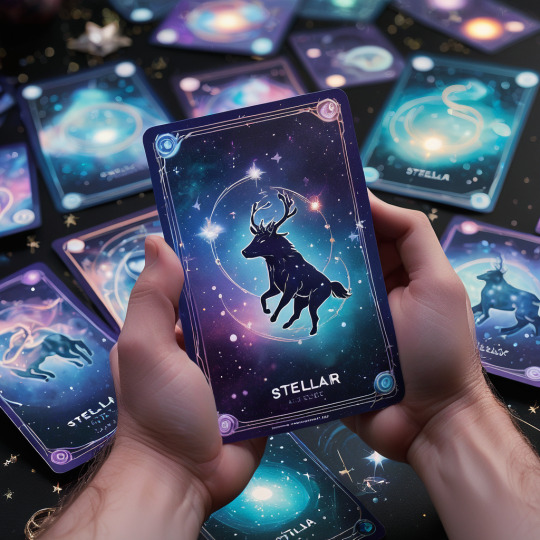
#Business model#play styles#card types#rules#objectives#card elements#stellar charm#battle strategy card game#TCG#Stellar Charm Cards
9 notes
·
View notes